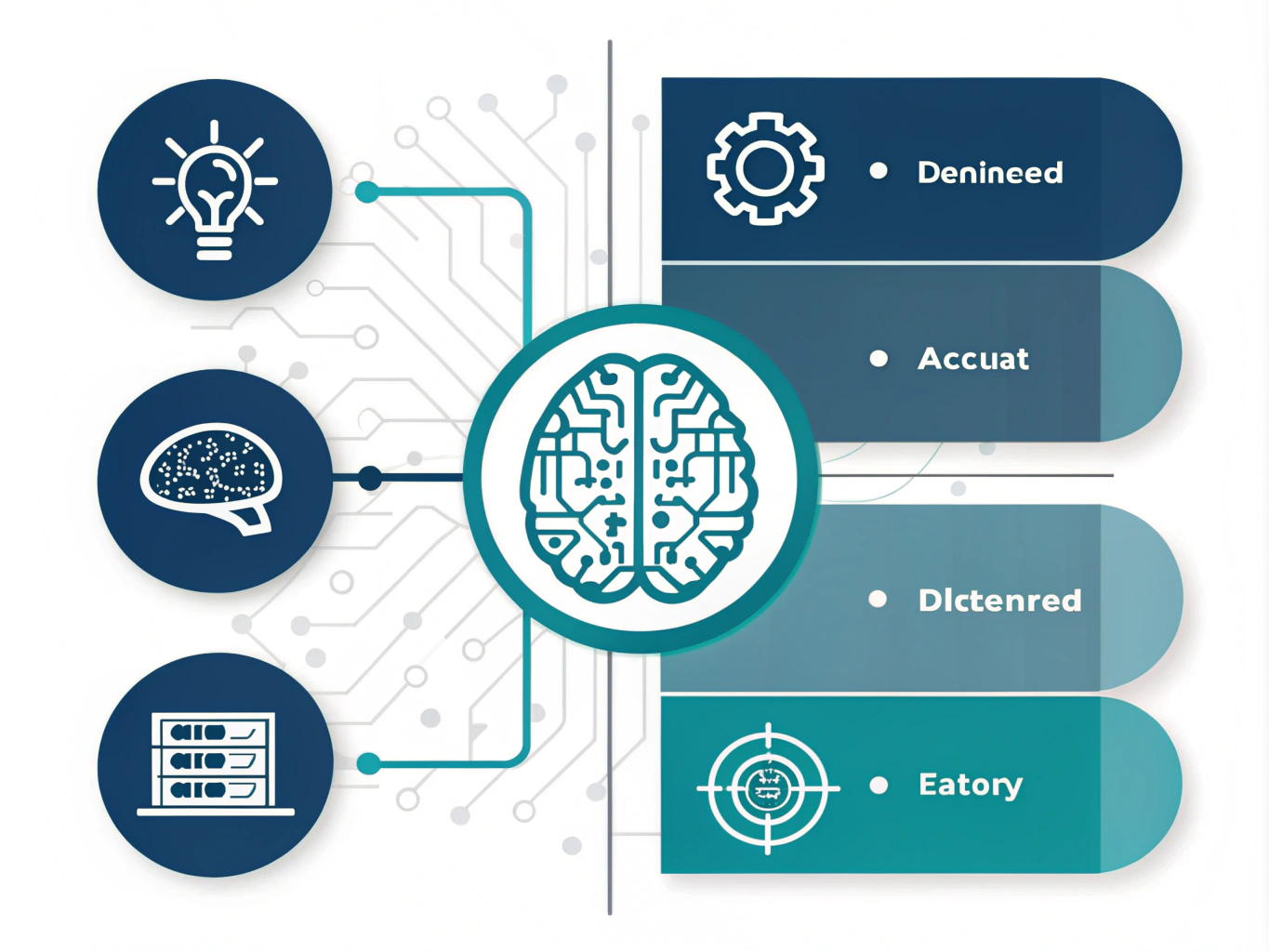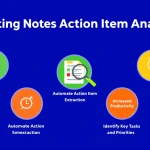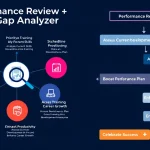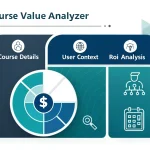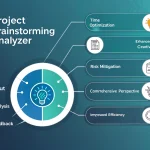Is this tool helpful?
How to Use the Patent Analysis Tool Effectively
To make the most of our Patent Analysis Tool, follow these simple steps:
- Enter the Patent Description: In the first text area, input the full description of the patent, including its claims. Be as detailed as possible, ensuring all technical aspects are covered. For example:
- “A method for improving battery life in smartphones using machine learning algorithms to optimize power consumption based on user behavior patterns and application usage statistics.”
- “A novel gene editing technique utilizing CRISPR-Cas9 technology to target and modify specific DNA sequences for treating genetic disorders in human embryos.”
- Specify the Technology Field (Optional): If known, enter the specific field of technology the patent is concerned with. This helps our AI better contextualize the analysis. For instance:
- “Artificial Intelligence in Mobile Device Power Management”
- “Biotechnology – Gene Editing for Medical Applications”
- Submit for Analysis: Click the “Analyze Patent” button to process your input.
- Review the Results: Once the analysis is complete, scroll down to view the comprehensive breakdown of your patent’s key aspects.
- Copy the Results: Use the “Copy to Clipboard” button to easily save or share the analysis.
Revolutionizing Patent Analysis: Your AI-Powered Patent Examiner
Welcome to the cutting-edge world of AI-assisted patent analysis! Our Patent Analysis Tool is a groundbreaking solution designed to streamline and enhance the patent examination process. By leveraging advanced artificial intelligence and machine learning algorithms, this tool emulates the expertise of a seasoned patent examiner with decades of experience across all technological domains.
What Sets Our Patent Analysis Tool Apart?
- Comprehensive Expertise: Our AI model is trained on vast amounts of prior art, including patents, scientific articles, and technological developments across all fields.
- Unbiased Analysis: The tool provides an objective, critical, and analytical examination of patent applications.
- Up-to-Date Knowledge: Constantly updated with the latest advancements in technology and patent law.
- Time-Efficient: Delivers in-depth analysis in a fraction of the time it would take a human examiner.
- Structured Output: Presents findings in a clear, organized format for easy comprehension and further action.
Benefits of Using the Patent Analysis Tool
1. Enhanced Efficiency in Patent Examination
Our tool significantly reduces the time and effort required to analyze patent applications. What might take a human examiner days or weeks can be accomplished in minutes, allowing for a more streamlined patent process.
2. Improved Accuracy and Consistency
By eliminating human bias and fatigue, our AI-powered tool ensures a consistently high level of accuracy across all analyses, regardless of the complexity or volume of patents being examined.
3. Comprehensive Technical Coverage
With its vast knowledge base spanning all technological fields, our tool can provide expert-level insights into patents across diverse domains, from biotechnology to artificial intelligence and beyond.
4. Early Identification of Potential Issues
The tool’s ability to quickly assess novelty and inventive step can help inventors and patent attorneys identify potential challenges early in the process, allowing for timely refinements and improvements.
5. Educational Resource
For aspiring inventors and patent professionals, our tool serves as an invaluable educational resource, offering insights into what constitutes a strong patent application and how to articulate inventions effectively.
Addressing User Needs and Solving Specific Problems
Problem 1: Time-Consuming Patent Examination Process
Traditional patent examination can be a lengthy process, often taking months or even years. Our Patent Analysis Tool addresses this by providing rapid, yet thorough analyses in minutes.
Example Calculation:
Consider a patent office processing 1000 patent applications per month:
- Traditional method: 1000 applications × 2 weeks (average examination time) = 2000 weeks of work
- Using our tool: 1000 applications × 10 minutes (average AI analysis time) ≈ 167 hours or about 1 week of work
This represents a time saving of approximately 99.5%.
Problem 2: Inconsistency in Patent Evaluations
Human examiners may have varying levels of expertise or be influenced by subjective factors. Our AI-powered tool ensures consistent, objective evaluations across all patent applications.
Example Analysis:
Let’s consider a patent application for a new type of solar cell:
- Human examiner evaluation:
- Examiner A: Considers the invention novel but lacking inventive step
- Examiner B: Finds both novelty and inventive step
- AI tool evaluation:
- Consistently identifies the specific aspects of novelty
- Provides a data-driven assessment of inventive step based on comprehensive prior art analysis
- Offers the same conclusion regardless of when or how many times the analysis is run
Problem 3: Limited Expertise in Emerging Technologies
As technology rapidly evolves, it can be challenging for human examiners to stay updated across all fields. Our tool’s constantly updated knowledge base ensures expertise even in cutting-edge domains.
Example Scenario:
A patent application for a quantum computing algorithm is submitted:
- Human examiner challenge: May require extensive research or consultation with subject matter experts, potentially delaying the examination process.
- AI tool advantage: Instantly accesses and applies the latest knowledge in quantum computing, providing a thorough analysis of the algorithm’s novelty and inventive step in the context of the most recent advancements in the field.
Practical Applications and Use Cases
1. Patent Offices: Streamlining Examination Processes
Patent offices worldwide can leverage our tool to expedite the initial screening of patent applications. This allows human examiners to focus their expertise on more complex aspects of patent evaluation, significantly reducing backlogs and improving overall efficiency.
Use Case:
The European Patent Office implements our tool as a pre-examination step:
- Before: 100,000 applications manually screened, taking an average of 6 months for initial feedback.
- After: AI tool provides initial analysis within 24 hours, allowing examiners to prioritize and fast-track promising applications while quickly identifying those requiring significant revisions.
- Result: Reduction in initial response time from 6 months to 1 week, a 96% improvement.
2. Inventors and R&D Teams: Preliminary Self-Assessment
Inventors and research teams can use our tool to assess the potential patentability of their ideas before investing in formal patent applications. This helps in refining inventions and identifying unique selling points.
Use Case:
A startup developing a new AI-powered traffic management system uses our tool to evaluate their invention:
- Input: Detailed description of their system, including the novel machine learning algorithms used for real-time traffic prediction and optimization.
- Tool Output:
- Identifies specific aspects of the invention that are likely novel.
- Highlights potential challenges to the inventive step based on existing traffic management technologies.
- Suggests areas where the invention could be strengthened to increase patentability.
- Result: The startup refines their invention, focusing on the unique aspects identified by the tool, leading to a stronger patent application.
3. Patent Attorneys: Enhancing Client Services
Patent attorneys can utilize our tool to provide quicker, more comprehensive initial assessments to clients, as well as to identify potential challenges or opportunities in patent applications.
Use Case:
A patent law firm incorporates our tool into their client consultation process:
- Before: Initial patentability assessments took 1-2 weeks and were limited by the specific expertise of available attorneys.
- After:
- Rapid initial assessment provided within 24 hours of client consultation.
- Comprehensive analysis across multiple technological domains, regardless of the firm’s in-house expertise.
- Attorneys use the tool’s output to guide more focused, value-added services such as strategic patent portfolio development.
- Result: Increased client satisfaction, faster turnaround times, and the ability to handle a broader range of patent applications.
4. Technology Transfer Offices: Evaluating Research Output
University and research institution technology transfer offices can use our tool to quickly assess the patentability of research outputs, helping to prioritize which innovations to pursue for patent protection.
Use Case:
A major research university’s technology transfer office implements our tool:
- Scenario: The office receives 500 invention disclosures annually from various departments.
- Implementation:
- All disclosures are run through the AI tool for initial assessment.
- Tool provides rankings based on novelty, inventive step, and potential commercial value.
- Office staff use these rankings to prioritize which inventions to pursue for patenting and commercialization.
- Outcome:
- 30% increase in successful patent applications.
- 50% reduction in time spent on initial invention assessment.
- Improved allocation of resources towards the most promising innovations.
Frequently Asked Questions (FAQ)
Q1: How does the Patent Analysis Tool determine the field of technology?
A1: Our AI model analyzes the content of the patent description and claims, identifying key technical terms, methodologies, and applications. It then cross-references this information with its vast database of technological fields to accurately categorize the patent. The optional field for specifying the technology area helps refine this classification further.
Q2: Can the tool analyze patents in languages other than English?
A2: Currently, our tool is optimized for English-language patent descriptions. However, we are working on expanding our capabilities to include major languages used in international patent filings, such as Chinese, Japanese, German, and French.
Q3: How does the tool stay updated with the latest technological advancements?
A3: Our AI model undergoes regular training cycles, incorporating new patents, scientific publications, and technological developments from various sources. This continuous learning process ensures that the tool remains at the cutting edge of technological knowledge across all fields.
Q4: Can this tool replace human patent examiners?
A4: While our tool significantly enhances the efficiency and consistency of patent analysis, it is designed to complement rather than replace human expertise. The tool provides valuable insights and initial assessments, allowing human examiners to focus their skills on more complex aspects of patent evaluation and decision-making.
Q5: How does the tool assess the “inventive step” of a patent?
A5: The tool evaluates inventive step by comparing the claimed invention to the state of the art in the relevant field. It considers factors such as unexpected results, solving long-standing problems, and overcoming technical prejudices. The AI analyzes these aspects in the context of what would be obvious to a person skilled in the art, based on its comprehensive knowledge base.
Q6: Is the analysis provided by the tool legally binding?
A6: No, the analysis provided by our tool is not legally binding. It serves as an informative guide and initial assessment. For official patent decisions, always consult with registered patent attorneys and refer to the official processes of your relevant patent office.
Q7: Can I use this tool for freedom-to-operate (FTO) analyses?
A7: While our tool provides valuable insights into patent landscapes, it is primarily designed for patentability assessments. For comprehensive FTO analyses, which involve evaluating potential infringement risks, we recommend using specialized FTO tools and consulting with legal professionals.
Q8: How does the tool handle confidential information in patent descriptions?
A8: Our tool processes all input data securely and does not store any patent descriptions or analysis results beyond the immediate session. However, for highly sensitive or confidential inventions, we recommend using anonymized or generalized descriptions when utilizing the tool.
Q9: Can the tool predict the likelihood of a patent being granted?
A9: While our tool provides in-depth analysis on novelty and inventive step, which are crucial factors in patent granting, it does not provide a direct prediction of grant likelihood. The actual granting of a patent depends on various factors, including specific jurisdictional requirements and examiner decisions.
Q10: How often is the tool’s knowledge base updated?
A10: Our AI model undergoes weekly updates to incorporate the latest patent publications, scientific articles, and technological advancements. This ensures that the tool’s knowledge remains current across all fields of technology.
Important Disclaimer
The calculations, results, and content provided by our tools are not guaranteed to be accurate, complete, or reliable. Users are responsible for verifying and interpreting the results. Our content and tools may contain errors, biases, or inconsistencies. We reserve the right to save inputs and outputs from our tools for the purposes of error debugging, bias identification, and performance improvement. External companies providing AI models used in our tools may also save and process data in accordance with their own policies. By using our tools, you consent to this data collection and processing. We reserve the right to limit the usage of our tools based on current usability factors. By using our tools, you acknowledge that you have read, understood, and agreed to this disclaimer. You accept the inherent risks and limitations associated with the use of our tools and services.
